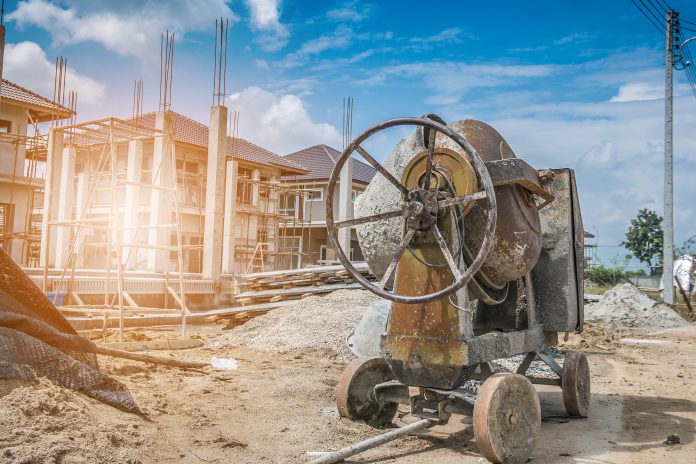Net-zero housing will require changes to the concrete industry, not just in manufacturing standards but also changes in purchasing habits
The concrete industry is one of many looking at new manufacturing methods to reduce its carbon footprint – and net-zero housing is a key to reducing carbon nationally.
Looking to achieve a net-zero carbon economy by 2050, global governments that signed the Paris Climate Agreement are still opening up to possibilities of changing traditional infrastructure with sustainable methods and practices.
Concrete is the most consumed human-made material in the world
Electric cars, fluorescent lights, and water-saving shower heads are all examples of efforts to lower our carbon footprint. Concrete, the most consumed human-made material in the world, needs its carbon footprint lowering too.
However, the energy savings are made from the supply side, with companies developing new technologies that reduce the amount of energy consumed for the same amount of use. Notably, they put little demand on the user, who can use the product no differently than before.
A new study from researchers in Japan and Belgium concludes that improved manufacturing technologies will only get the industry within 80% of its goal – and net-zero housing will need a lot more than just a vision – it will need entire changes to material production.
Improved manufacturing technologies will only get the industry within 80% of its goal
The study, using a dynamic material flows analysis model focusing on Japan, found that the other 20% will have to come from changes in how concrete is consumed and managed, putting expectations on the buyer as well as the seller
The problem, explains Dr. Takuma Watari, a researcher at the Japan National Institute for Environmental Studies and lead of the new study, is that “supply-side efforts are not enough if nations are serious about achieving net-zero carbon emissions.
“We found that supply-side efforts can at best achieve 80% of the needed reductions. Our research has shown that for net-zero emissions, both supply-side and demand-side strategies are necessary.
“We must change not only how concrete is made, but also how it is used.”
“Our research has shown that for net-zero emissions, both supply-side and demand-side strategies are necessary”
After exhausting all options on the supply side, the team noted, after examining the cement and concrete cycle in Japan from 1950 to today, that the concrete industry has already implemented effective technologies to reduce its carbon footprint to the point that it cannot be expected to solely take the responsibility.
Reducing the demand for concrete
Many studies have shown the potential for making the concrete industry more energy efficient through esoteric efforts like “clinker-to-cement ratio reduction”, “cement substitution with alternative binders”, and “carbon capture and utilization”.
Extending the service life of buildings and infrastructure through new design as well as enhancing their multi-purpose use will reduce the demand for concrete.
The solution to this was that consumers of concrete need to view their consumption with more of the recycle, reuse, and reduce attitude applied to household waste.
This doesn’t just include homes, however, but infrastructure for medical care, transportation, schools and stores.
Supply versus demand
The problem however continues as the concrete industry, while incentivised to reduce carbon consumption on the supply side, has little motivation in changing habits on the demand side.
With appropriate changes to the demand side, the study states that not only will the concrete and cement cycle become more environmentally friendly, and the goal of net-zero carbon by 2050 be attained, there will be benefits for the use of scarce resources such as water as well.
Watari said: “Current profits are directly related to the volume sold. This gives little reason for the industry to promote efficient material use. The change needs to come from policy.
“The most important finding of our study is that there is no ‘silver bullet’ solution. Everyone needs to contribute. Right now, there is too much emphasis on supply-side strategies. To realize net-zero emissions, architects, urban planners, and general consumers must contribute.”


































